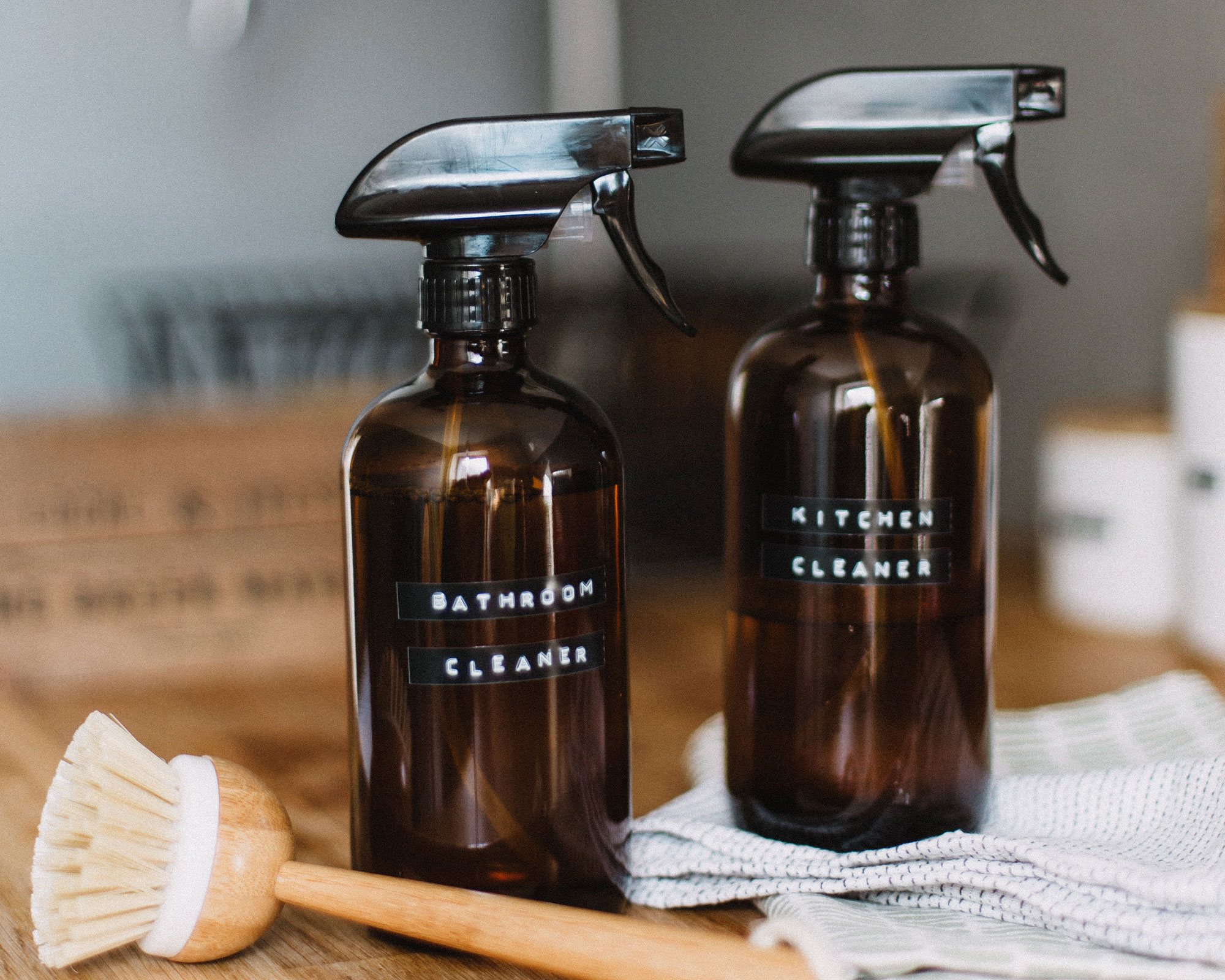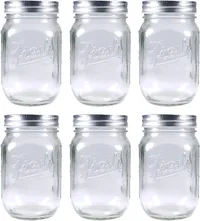How to get rid of pantry moths naturally – and keep them away for good
Beside yourself trying to figure out how to get rid of pantry moths? Our guide has you covered with top tips on repelling them as well as how to combat that infestation


Looking for info on how to get rid of pantry moths? You've come to the right place because we've got the lowdown on their food of choice and how to repel them forever.
Also known as the Indian meal moth, flour moth or grain moth, pantry moths are common in the US and are mostly found in pantries and cupboards, and their food of choice is flour and grain products.
Pantry moths lay tiny gray-white eggs in flour, cereal, pet food, and other dry produce. When the eggs hatch, larvae feed on your self raising or whatever you have on offer. They then form cocoons, and eventually hatch into adults, starting the whole cycle over again.
They usually hitch a ride on loose produce in your grocery bags and have probably come from from infested grain stores and warehouses. The adults are quite easy to distinguish; a body measuring about half-an-inch long with gray and reddish brown wings. You'll probably find these first, followed by the larvae's silk webs in your food containers.
If you're not seeing this type of activity, check our how to identify bugs guide to find the critter in question.
Experts at University of Maryland explain more, 'Finding webbing or a large number of caterpillars or worm-like larva (immature insect stage) crawling about in a box or container of cereal or spices is often the first indication of an infestation. Also, moths flying around the kitchen or an enclosed area such as a garage is a sign that you should inspect grain products, cereals, spices, dry pet food, and birdseed.'
'However, if the first indication is the occurrence of insects crawling or flying about outside of a package, then a more thorough search for the source of the pests is necessary.'
Get small space home decor ideas, celeb inspiration, DIY tips and more, straight to your inbox!
Doesn't sound good, does it?
Before they eat you out of house and home, we've run through the best ways to rid yourself of these destructive pests and make sure they never come back.
- Are you seeing moths near your clothes as opposed to your kitchen? You might want to consult our How to get rid of moths and how to identify them guide.
Use a pantry moth pheromone trap
How to get rid of pantry moths couldn't be much more effective than with a pheromone trap.
With special pheromone attractant mixed in with a glue board, males are attracted by the scent and trapped, which prevents them from reaching the female and breeding, breaking the pantry moth group life cycle.
Place the trap in areas where dry foods are stored, like kitchens, cupboards, basements and garages, ensuring there is ample air circulation in an undisturbed location away from your family and pets' footfall.
Give it a couple of days to work its magic as it takes this length of time for the pheromone to become particularly active.
Kill adult pantry moths with diatomaceous earth
Acting as a highly effective desiccant, drying out the insect’s body at every stage of life, diatomaceous earth is basically a very fine rock powder.
It can be messy but you can also get diatomaceous earth in a spray bottle, which is especially handy for spraying inside wall crevices and between pantry shelves.
Warning: You must wear protective gloves and a mask while applying it because it can irritate the respiratory system if inhaled. And always use a food grade version, especially around loose produce.

Clear out and clean down your pantry
It's a no-brainer, really, but having a thorough clear out of your pantry is the first real step in defeating the mighty pantry moth.
Here's a short checklist to run through while you're cleaning.
- Firstly, look for larvae in and on food packaging, including but not limited to grain-based products like flour, cereal, pasta, and baking mixes along with nuts and sweets. Pay particular attention to webs as these may have been spun by a moth and not a spider.
- If you find any infested food, throw out immediately and wipe down the containers with undiluted vinegar. Using vinegar is extremely effective as while the vinegar cleans, it changes the pH of anything on the surface and kills any moth eggs and larvae.
- Vacuum your shelves, walls, baseboards, floor and ceiling, paying attention to any corners, undersides and brackets. Then, with equal parts hot water, soap and vinegar, get to scrubbing and mop the floor.
- Straight after you vacuum, make sure you remove the vacuum bag, and throw it out in the outside trash can as you do not want to reintroduce any larvae after all that effort do you? If you have a bagless vacuum, give the dust compartment a good washing out.
- You'll find more advice on doing the kitchen spring clean in our guide on how to clean a kitchen.
How to prevent them from coming back
Like pretty much all insect infestations, prevention is the best control for these pantry pests.
Once you've taken one of the above eradication tactics, it's time to take heed of these tips to keep pantry moths away once and for all.

1. Invest in airtight containers
When you've cleaned out your pantry and you're about to restock, consider the advice from experts at the University of Maryland:
'Inspect products again when you get it home and put it into storage containers. Keep food in glass jars, plastic containers, or metal canisters. Glass jars that pressure seal with rubber gaskets are the best. Make sure they have tight-fitting lids. Many of the pantry pests are very small and can crawl under loose-fitting lids.'
Vice-versa if you inadvertently bring home food containing eggs, the newly hatched moths won't be able to get out and so will only infest the one container.
Plastic bags and cardboard boxes just won't cut it as the intrepid moths will likely chew through them to get to the good stuff.

2. Inspect your grocery bags
Most pantry moth problems start with a trip to the grocery store so taking extra care when you're there will help prevent the infestation headache.
When you're buying bulk grains, flour, dried fruit or even coffee, inspect the produce carefully when scooping into bags for weighing. Same goes for cans and packages; rinse them before putting them away to kill off any larvae.

3. Store loose produce in the freezer
Storing your foods in a cool dry place, or better yet the freezer will prevent infestation as most pantry pests multiply faster in humid conditions.
Surprisingly, many products can be stored in the freezer, including nuts, flours and dried fruit and herbs. And if you're particularly concerned about anything you've bought at the grocery store, you can place the bags in the freezer for a week to kill off any potential eggs.

4. Use natural repellents like essential oils
Making a natural repellent is a simple way to deter the moths from re-entering your store cupboards. Moths in general hate any sort of strong smell - it's a good thing we love the smell of essential oils and herbs then, eh?
Create a mix of essential oils like cedar (they particularly hate this), lavender and mint and mix with equal parts vinegar and water in a spray bottle. Et voila, spritz away in corners, on tins and jars... you name it, spritz it.
You can also fill sachets with a mix of strong scented herbs like bay leaves, lavender, rosemary and thyme and tuck them in your pantry, replacing them over time to keep them effective.
Or use Vetiver à la Martha Stewart: 'To help keep them away, use Vetiver, a South Asian grass with the pleasant, earthy aroma of an uncut meadow, that moth's hate.'

Jenny is Senior Digital Editor and joined the team in January 2021. She also works on the homes brands' video show, on the Future Homes Network, which is packed full of ideas to help you make the most of your own home and garden. Since getting on the property market with her first apartment and then more recently a house, her passion for interior design and gardening has taken on a new lease of life. Jenny's currently on the lookout for a doer-upper to put her stamp on. She loves collecting and salvaging unique items (much to her other half's despair) but sniffing out stylish home bargains is her one true love. When she has a spare minute, she loves to do a spot of crafting, having studied textiles at Uni – although she hardly gets the chance with a toddler who keeps her permanently on her toes.
